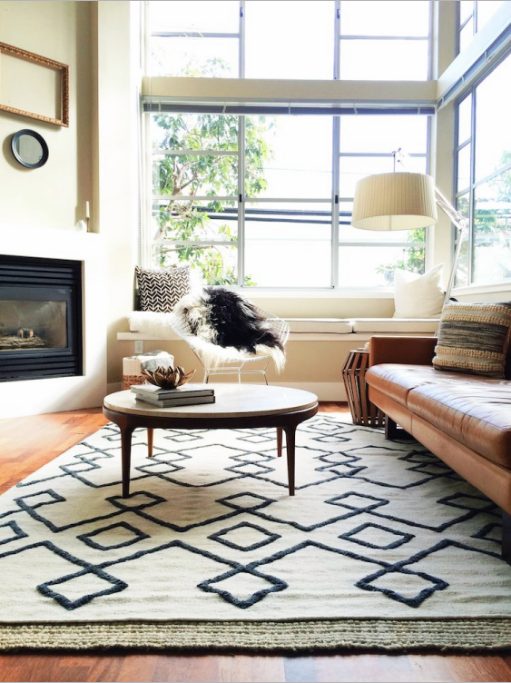 As interior design aficionados, we love having fun with patterns. They’re a great way to bring life to a dull room and express your personality in a space.
As interior design aficionados, we love having fun with patterns. They’re a great way to bring life to a dull room and express your personality in a space.
We have noticed, however, that when decorating their space many people tend to stick with just one pattern, or shy away from them all together. Hmm, we thought to ourselves, now why could that be? Oh, the same reason people are always afraid to try something new—they don’t want to get it wrong!
Well, we have good news. We’re going to share our favorite pattern do’s and don’ts, so you’ll soon be on your way to becoming a master pattern mixologist!
DO use pattern to set the tone of a room.
Before you even look at pattern swatches, stop and think about what kind of energy you want to bring to your space. Do you want it to feel upscale and sophisticated? Vibrant and playful? Relaxed, but interesting? This will help you narrow down important details for your patterns, such as style, color, texture, and size.
The patterns you choose should, first and foremost, help achieve the look you’re going for. Pattern is not to be used without purpose.
DON’T stray from your color palette.
The big “secret” to making different patterns work together is to keep them within the same color family. There’s no reason you can’t be adventurous with your design (who says floral and geometric can’t go together?) if you use color as a unifier.
Now obviously, this doesn’t mean all of your patterns need to be made up of the exact same color. Feel free to use different shades in your palette, just keep them related and choose similar tones. Mixing jewel tones and pastels across different patterns, for example, will just look chaotic.
DO play around with scale.
A standard, reliable guideline for successful pattern mixing is to implement three different patterns across various scales. Generally, the easiest option is to choose one large, anchor pattern, one medium, and one small pattern.
Use your dominant pattern on larger spaces, like the wall or an area rug. Designate your medium pattern for supporting pieces, like the furniture. Lastly, save your small pattern for accessories and décor.
DON’T forget to supplement with solids.
When it comes to pulling off mixed patterns, solids are your best friend. Use blocks of solid color and solid-colored surfaces to break up patterns and ground your space.
If you layer too many patterns on top of one another, you’re going to overwhelm the room. At least 40% of the room should be made up of solids, so the eye has somewhere to land. To maintain balance, try to pair bold patterns with bold colors and vice versa.
DO experiment with texture.
Pattern and texture go hand-in-hand in the interior design world because of their power to create visual interest. Prevent your patterns from overpowering by incorporating them into different textures across your space.
Place patterns on different textures for a different effect. The style you choose will play a different role in the room on the wall or carpet, for example, than it will on your throw pillows or a large painting over the mantelpiece.
DON’T leave the room feeling unbalanced.
You run two major risks if you don’t know how to successfully mix patterns in interior design: making your space feel cluttered and making it feel unbalanced. All of the elements we’ve already discussed—color, scale, texture—contribute to creating balance in your use of pattern.
Something else to keep in mind about balance is that you’ll want to distribute patterns equally throughout your space in order to achieve it. Even if you’ve followed all our rules thus far for pattern mixing, if you only use them lopsidedly in one section of the room, they’re not going to look right.
Sometimes, you can use every tip you find online, watch HGTV reruns for hours, and still end up with a space that doesn’t match your vision. That’s when it’s time to bring in an expert! The team at Hudson & Crane is here to help you navigate the rules of interior design and bend them beautifully to tell your story.
Contact us today to learn more about our interior design services and get started with a professional consultation!
